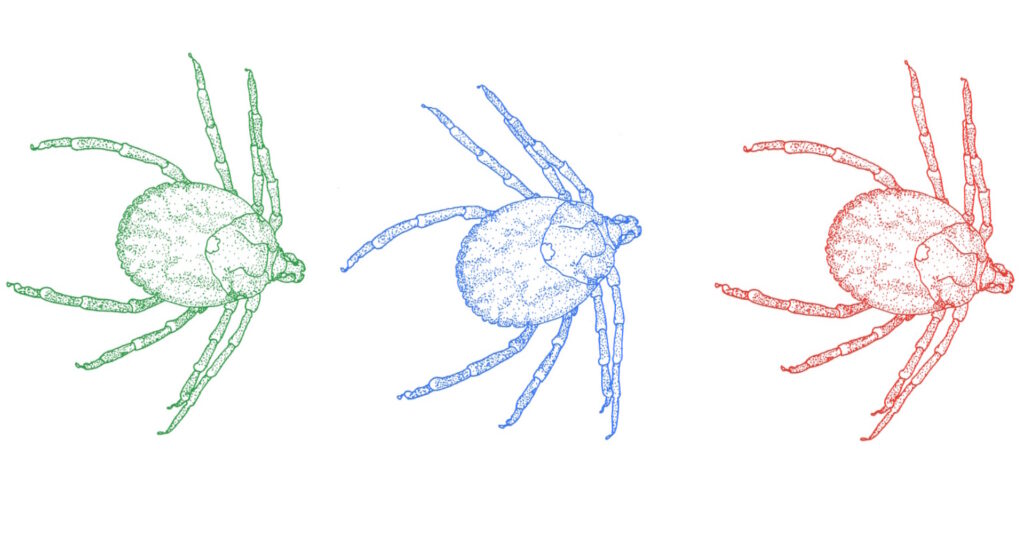
As Australians venture into the country’s diverse landscapes, they may unwittingly encounter one of nature’s most resilient hitchhikers: ticks. These tiny arachnids, closely related to spiders and scorpions, are more than just an annoyance. They pose significant risks to both human and animal health by transmitting various pathogens. Now, citizen scientists are being invited to help map these disease-carrying creatures across Australia.
Xavier Barton, a PhD candidate at Murdoch University, is at the forefront of this research. Focusing on the ornate kangaroo tick (Amblyomma triguttatum), Barton is examining their genetics, habitats, and associated microbes to understand how ticks and tick-borne pathogens spread. His work aims to fill a critical knowledge gap in Australian tick research, which has historically lagged behind regions like North America and Europe.
The Hidden Threat of Ticks
Picture this: you’re enjoying a peaceful bushwalk with your dog, surrounded by the sounds of nature. Suddenly, you notice a tiny creature crawling up your leg—an unwelcome tick. While they may seem insignificant, ticks have a profound impact on health. Australia is home to 74 tick species, five of which are introduced. These blood-sucking parasites harbor a variety of bacteria in their gut, many of which can be harmful to humans and animals.
Australia has been relatively fortunate in having fewer tick-borne diseases compared to other regions. However, the threat is real, as demonstrated during the COVID-19 pandemic in 2020. A bacterial pathogen, Ehrlichia canis, was introduced to northern Western Australia, leading to devastating mortality among dogs. Pet owners watched helplessly as their beloved companions succumbed to this tick-borne disease, highlighting the importance of understanding tick ecology.
Researching Tick Ecology
Barton’s PhD project takes a holistic approach to studying tick ecology through three main avenues:
Population Genetics
By analyzing DNA differences between tick specimens, Barton aims to understand how closely related individual ticks are across the landscape. His research focuses on Perth’s Swan Coastal Plain, a complex mosaic of Banksia woodland, urban development, and agricultural land.
Environmental Analysis
The Swan Coastal Plain’s mixed land use provides an ideal environment for testing how different land covers influence tick movement. By mapping population genetic structure and overlaying environmental variables like land cover, climate factors, and soil attributes, Barton seeks to determine what influences tick distribution.
Microbiome Analysis
Understanding the movement of tick-borne pathogens relies on studying the bacteria within tick specimens. By building on population structure and environmental data, Barton aims to reveal which pathogens circulate through the environment and how diseases might spread across different habitats.
Citizen Science: A Call to Action
This research extends beyond the laboratory into the community, where citizen scientists can play a crucial role. If you enjoy bushwalking and encounter these arachnid hitchhikers, you can support Murdoch University’s Cryptic Lab in two ways:
- Join the iNaturalist Project: Participate in the Tick Exploration project on the iNaturalist platform by photographing ticks you encounter and uploading the images. This creates a valuable database of tick distribution and seasonality across Western Australia.
- Send Specimens: If you find a tick attached to yourself or your animals, consider sending it to the lab after safe removal. This data helps build a comprehensive framework for protecting people, companion animals, livestock, and wildlife.
By participating, you contribute to a larger understanding that helps protect our shared environment. Every observation and specimen aids in developing evidence-based strategies for managing tick-borne disease risks while preserving biodiversity and ecosystem health.
The Broader Implications
This research embodies the interconnected thinking that drives environmental policy. Tick-borne diseases don’t respect boundaries between human health, animal welfare, and ecosystem health. Climate change, habitat fragmentation, and urbanization all influence tick populations and disease transmission patterns.
By understanding these relationships, researchers can contribute to the One Health approach, which recognizes that human health, animal health, and environmental health are fundamentally interconnected. Your participation in citizen science projects like this demonstrates how community engagement can drive meaningful environmental research.
So next time you’re out enjoying Western Australia’s beautiful bushland, remember that even those tiny hitchhikers have a story to tell about our ecosystems. With your help, we can ensure that story includes effective disease prevention and environmental stewardship for generations to come.
To participate in the “Tick Exploration” iNaturalist project, follow this link: iNaturalist Tick Exploration or feel free to reach out to Xavier Barton at [email protected] to send specimens.





